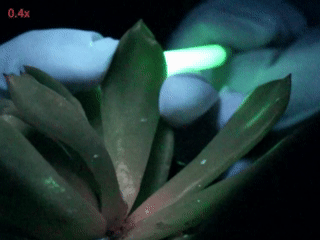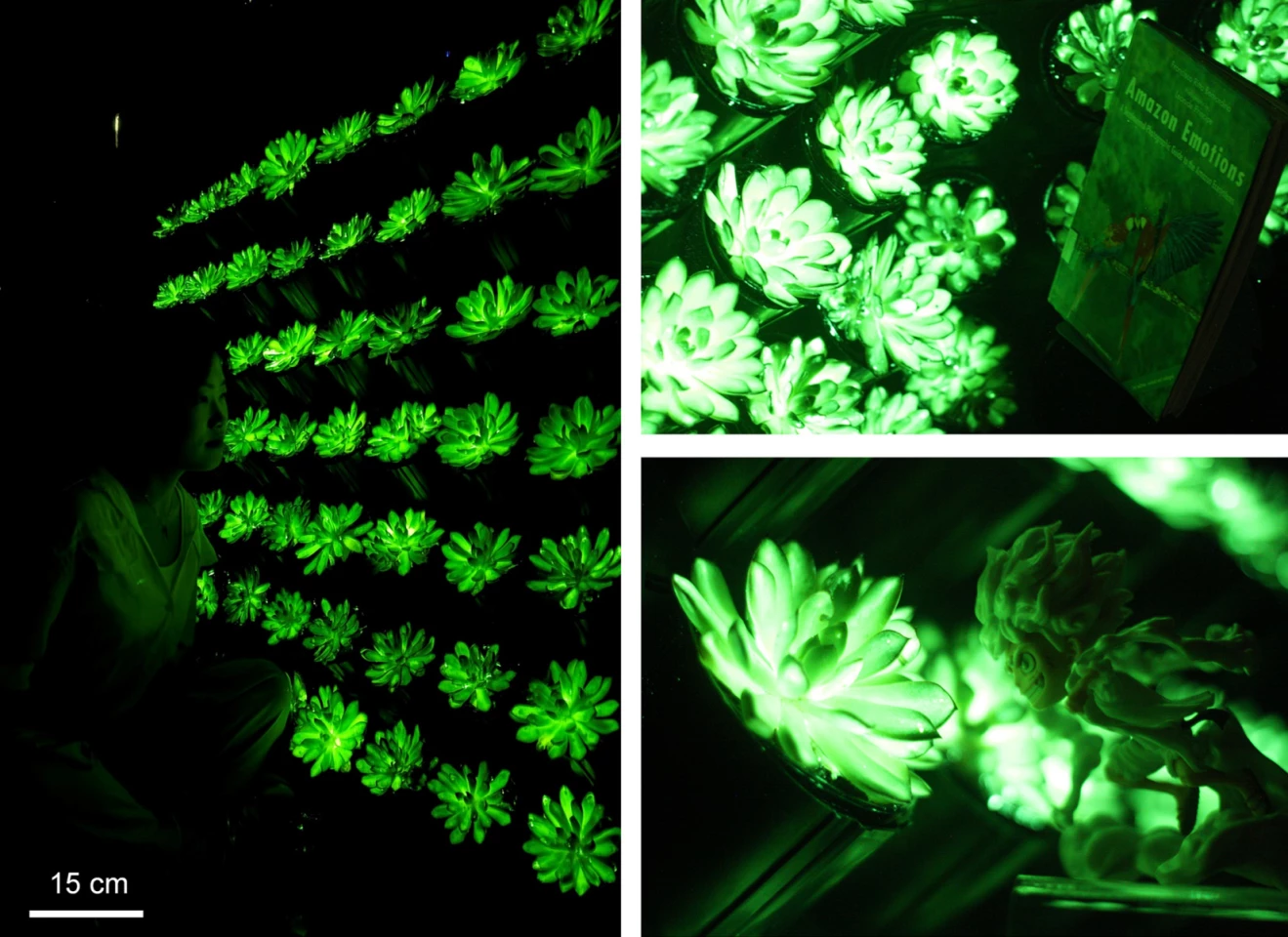Wouldn't it be great if the plants in your home could do more than just sit there looking pretty? Researchers at South China Agricultural University in the city of Guangzhou have found a way to upgrade them into soft glowing night lights in a range of hues, with the use of nanoparticles.
The team developed a light-emitting phosphor compound that enabled succulents with fleshy leaves to charge in sunlight or indoor LED light in just a couple of minutes, and then emit a soft uniform glow that lasts up to two hours.
The afterglow phosphor compound – which is similar to those found in glow-in-the-dark toys – is inexpensive, biocompatible, and negates the need for more complex methods of infusing bioluminescence in plants, like genetic modification. It simply gets injected into the leaves.

This isn't the first time plants have been modified to glow. A team at MIT used enzymes seen in fireflies to achieve this back in 2017, and there was also a collaborative effort in 2020 that saw DNA from bioluminescent mushrooms injected into tobacco plants to make them light up. A 2021 MIT project featured a similar approach to this latest work out of China, but saw plants like watercress, tobacco, basil, and daisies glow for only half as long.
Beyond modifying a commercial compound for this project, the team also had to figure out the right size for the phosphor particles so they'd work as intended inside plants. Shuting Liu, first author on the study that appeared in Matter this week, noted, "Smaller, nano-sized particles move easily within the plant but are dimmer. Larger particles glowed brighter but couldn’t travel far inside the plant.”
Through extensive testing, the researchers arrived at an optimal size of around 7 micrometers, about the width of a red blood cell. They also determined through experimentation that the particles worked best in succulents, rather than plants with thinner leaves like bok choy.
Once they'd landed on the right particle size, loading concentration, and plant type, the team found that the phosphor material diffused into succulent leaves almost instantly, and uniformly lit up entire leaves – enough to illuminate nearby objects.

The scientists were also able to create modified phosphors that glowed in colors like green, red, and blue. That could make for novel indoor or garden decor, as well as pathway lighting. These luminous plants also don't cost much – according to Liu, "Each plant takes about 10 minutes to prepare and costs a little over 10 yuan (about $1.4), not including labor.”
Over the course of 10 days, the injected plants didn't show any signs of damage, yellowing, structural integrity, or even reduced levels of chlorophyll. The researchers' next steps involve observing the long-term effects of the phosphor on plants to determine just how safe it is. If it's good to go, it'd be cool to see this in sprawling botanical gardens where you can be surrounded by glowing plants for an immersive experience.
Source: Cell Press via EurekAlert





